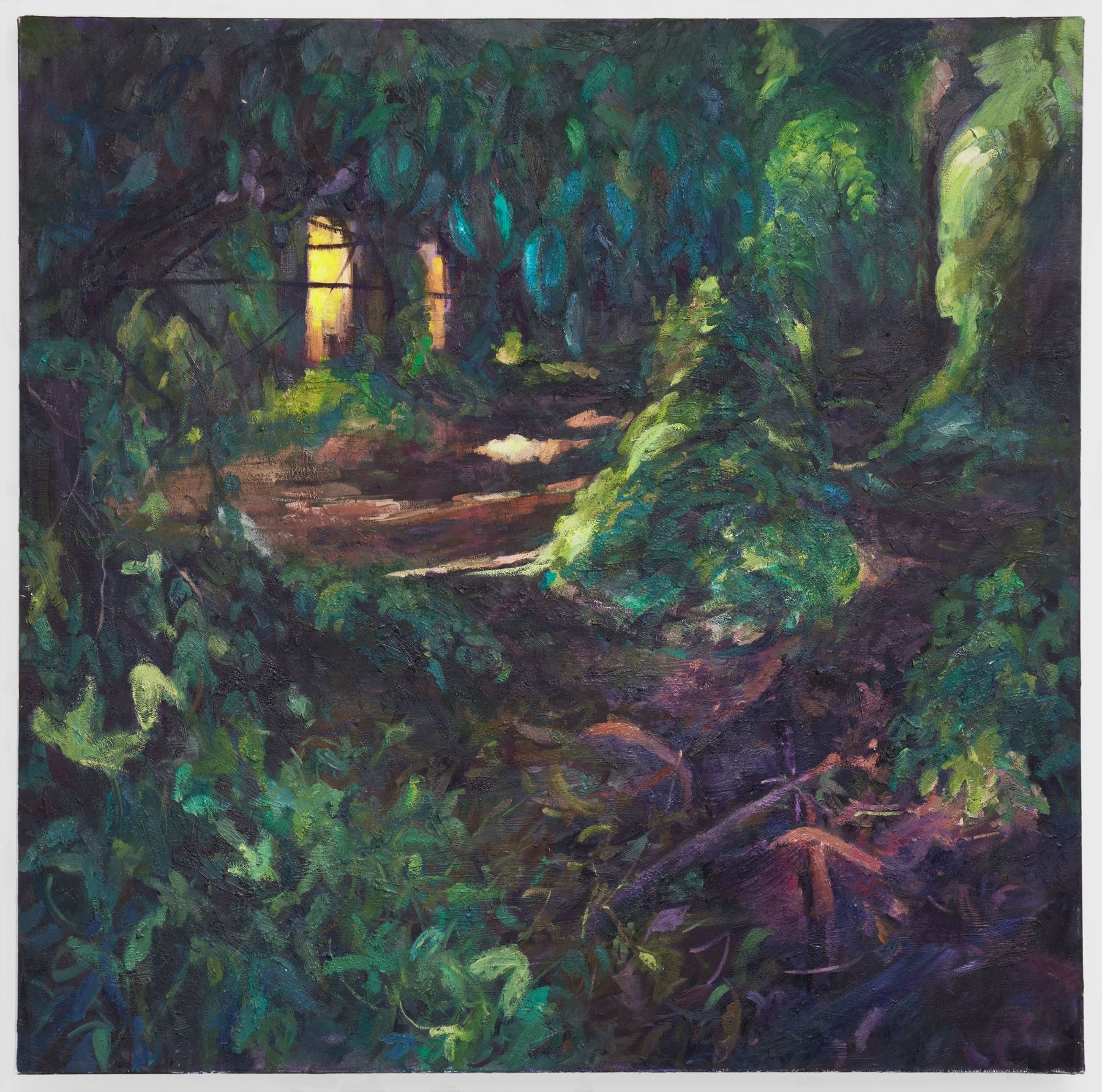Justine Fisher

To Fisher, the absence of figures in Cabin in the Woods opens the work to "a higher level of objectivity," which engenders "a greater consciousness and empathy.” Described in loose brushstrokes, the spreading darkness beneath the trees offers a shadowy counterpoint to the light glowing from a pair of illuminated windows. Remembered fairytales jostle at the corners of the canvas, lending the scene a quiet sense of foreboding. The viewer, as implied protagonist, plays an ambiguous role as uninvited guest, lost traveller, or woodland sprite. To enter the cabin, step into the brightness, or to remain in the obscuring safety of the gloam?
b.1984, Cape Town
“The painting never seems right,” Justine Fisher says of her large-scale works, “even when a part of the picture is looking the way I want it to look, something else needs fixing... My patience is challenged by the imperfection that my work is revealing.” Resisting staid finality, Fisher pursues instead a momentary balance in oil and gesture. Her large-scale paintings more often take as subject dimly lit landscapes and interior scenes transcribed with a loosely figurative style that leans towards abstraction. Where Fisher once worked directly from photographs taken and found, her more recent compositions are described first in sketches and then collaged with photographic fragments, later finding expression on canvas. This process of re-articulation across mediums lends her works their surreal, dreamlike undertones, being neither wholly imagined nor copied from life.
Daughter of cultural benefactor and artist Wendy Fisher, it is perhaps unsurprising that Fisher became a painter. Hers was an upbringing surrounded by art and its attendant propositions. Fisher’s paintings, with their distinct gestural language, find easy company hung alongside the works of artists she might count among her childhood influences.